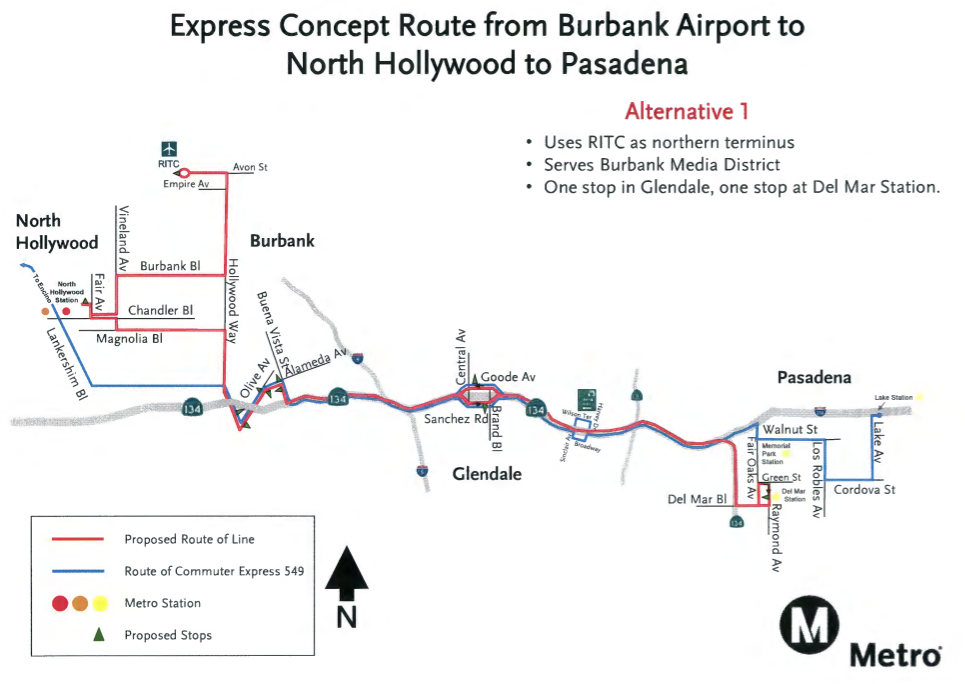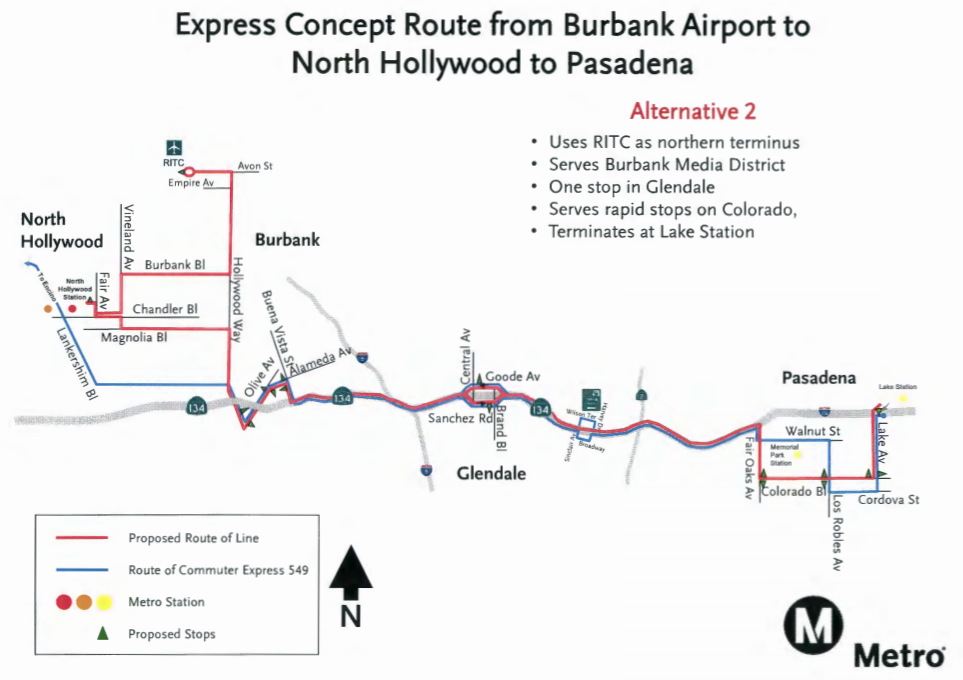|
|
Post by masonite on Apr 22, 2015 16:09:03 GMT -8
I agree. People if asked in a vaccum will say they want light rail, but if it forces out other priorities, like say a Sepulveda Pass Line they might feel differently. Right now, the questions aren't being asked like that. The local Councils of Government have identified about $275B worth of projects for Measure R+. Probably can only have about 15% of that when said and done. Overall, the expectations are just too high and I believe Measure R+ will have a tough time passing, especially since this will be the 4th sales tax hike in effect for transit in LA County. Not a hike, just an extension of Measure R beyond the original 30 years. You weren't going to pay any more sales tax with Measure J, and you will not either with Measure R2. You'll pay for it for a longer period of time. That is not necessarily true. They don't know yet how they will structure it. If they have to wait until 2039 for the tax to take effect, they won't be able to list out a bunch of new projects. It will be pretty sobering if they list out a Sepulveda Pass Project with all funding available by 2050. That isn't going to get people too excited. |
|
|
|
Post by bzcat on Apr 22, 2015 16:23:25 GMT -8
Not a hike, just an extension of Measure R beyond the original 30 years. You weren't going to pay any more sales tax with Measure J, and you will not either with Measure R2. You'll pay for it for a longer period of time. That is not necessarily true. They don't know yet how they will structure it. If they have to wait until 2039 for the tax to take effect, they won't be able to list out a bunch of new projects. It will be pretty sobering if they list out a Sepulveda Pass Project with all funding available by 2050. That isn't going to get people too excited. I think you may not have understood the point of Measure J  If Measure J passed, you would see tax right away because it is just an extension of R. It's the same money. Measure J was structured as an extension of R to ensured a steady stream of revenue into the future, which would enable Metro to then go borrow money and get matching Federal funds now to accelerate the constructions. The idea for Measure R+ is the same, but just with specific projects thrown into the proposition language to ensure passage. I agree that R+ doesn't exist yet so perhaps they will change it to a new tax but I highly doubt it. |
|
|
|
Post by masonite on Apr 22, 2015 17:03:02 GMT -8
That is not necessarily true. They don't know yet how they will structure it. If they have to wait until 2039 for the tax to take effect, they won't be able to list out a bunch of new projects. It will be pretty sobering if they list out a Sepulveda Pass Project with all funding available by 2050. That isn't going to get people too excited. I think you may not have understood the point of Measure J  If Measure J passed, you would see tax right away because it is just an extension of R. It's the same money. Measure J was structured as an extension of R to ensured a steady stream of revenue into the future, which would enable Metro to then go borrow money and get matching Federal funds now to accelerate the constructions. The idea for Measure R+ is the same, but just with specific projects thrown into the proposition language to ensure passage. I agree that R+ doesn't exist yet so perhaps they will change it to a new tax but I highly doubt it. There is no framework for Measure R+ to be just like Measure J. Here is an article on it this morning thesource.metro.net/2015/04/22/video-garcetti-talks-about-potential-metro-ballot-measure/. If the ballot measure is just an extension of Measure R that means no new tax revenue will flow into Metro until 2039. They may be able to borrow against those future revenues to accelerate current Measure R projects like Measure J did, but if those funds are already promised for future projects, that makes that very unlikely. In other words, if it is a tax extension of Measure R then you can either accelerate current Measure R projects or have new projects that won't come about until the 2040's at the earliest, except for maybe one or two. You can't just have all these new projects come about from a tax that doesn't start for over 20 years without a massive amount of borrowing. The federal government won't likely be a big lender on this in any case. |
|
|
|
Post by macross287 on Apr 25, 2015 5:58:55 GMT -8
|
|
|
|
Post by johanragle on Apr 25, 2015 22:28:52 GMT -8
Text of AB 726: leginfo.legislature.ca.gov/faces/billTextClient.xhtml;jsessionid=20915a47409c193b16a11bdfb1b8?bill_id=201520160AB726AB 726, as amended, Nazarian. Vehicles: Los Angeles County Metropolitan Transportation Authority. Existing law imposes a 40-foot limitation on the length of vehicles that may be operated on the highways, with specified exemptions. Existing law exempts from this limitation, among other things, an articulated bus or articulated trolley coach that does not exceed a length of 60 feet. This bill would authorize the Los Angeles County Metropolitan Transportation Authority to operate articulated buses that do not exceed a length of 82 feet on the route designated as the Orange Line in the County of Los Angeles. This bill would make legislative findings and declarations as to the necessity of a special statute for the Los Angeles County Metropolitan Transportation Authority. |
|
|
|
Post by bzcat on Apr 27, 2015 11:44:52 GMT -8
I hope the legislature quickly approves this bill
|
|
|
|
Post by macross287 on Apr 27, 2015 19:35:20 GMT -8
One thing to note about this exemption is that the 80ft long buses would be restricted to the Orange Line Right of Way. That means all buses headed to Warner Station would still need to be 60ft or less. Metro Could conceivably eliminate the Warner Center spur when they begin to use the 80ft buses.
|
|
|
|
Post by johanragle on Apr 28, 2015 8:00:31 GMT -8
If the buses work, however, there's nothing stopping the Legislature from amending the legislation in a later bill to widen the exemption.
|
|
|
|
Post by fissure on Apr 29, 2015 0:48:16 GMT -8
One thing to note about this exemption is that the 80ft long buses would be restricted to the Orange Line Right of Way. That means all buses headed to Warner Station would still need to be 60ft or less. Metro Could conceivably eliminate the Warner Center spur when they begin to use the 80ft buses. IANAL, but nothing about the text of the bill says anything to that effect. "[T]he route designated as the Orange Line in the County of Los Angeles" sounds like it would include the Warner Center stub as well (since that is part of the route). It doesn't use the term "right-of-way". |
|
|
|
Post by johanragle on May 12, 2015 12:03:06 GMT -8
|
|
|
|
Post by bzcat on May 12, 2015 15:09:12 GMT -8
Well... let see what Metro is actually planning shall we? transittalk.proboards.com/thread/1372/metro-noho-pasadena-expressThe proposed NoHo-Pasadena "super rapid" sort of runs parallel to your suggestion, except it skips downtown Glendale and downtown Burbank in favor of the Media District. This will be essentially a blueprint for the eventual SFV-SGV "Crosstown" Line   The reason it skips Downtown Glendale and Downtown Burbank under the current plans? My guess is that going via Colorado Blvd to Downtown Glendale will make the line too expensive to operate (too many labor hours). So let's assume the eventual "Crosstown" Line has dedicated lanes on Colorado Blvd, which will reduce travel time (and thus labor hours) so you can add Downtown Glendale and Eagle Rock back in the service. Then the choice comes down to either Downtown Burbank or Media District - because of the triangular nature between Downtown Burbank, Media District, and Glendale, I think it's either: 1. NoHo - Downtown Burbank - Glendale - Eagle Rock - Pasadena or 2. NoHo - Media District - Glendale - Eagle Rock - Pasadena But not both Downtown Burbank and Media District. So tough choice... I'm not sure which way I would lean. |
|
|
|
Post by johanragle on May 12, 2015 16:18:02 GMT -8
And that's fine... for a commuter bus line.
But a real transit line should serve the communities, not a small group of commuters. I have no idea what the Commuter Express 549 ridership is, but it seems pretty low (I took it from NoHo to Glendale one day around 6 PM and the bus was barely half full).
Thing is, Downtown Burbank is roughly in line with Downtown Glendale. And because of the triangular layout of Burbank, the direct Chandler route NoHo-downtown Burbank is about 4.87 miles, versus 5.7 miles for NoHo-Media District-Downtown Burbank. In other words, by adding less than one mile to the route the line could serve a much greater population.
I added Metro's ECR Alt 2 route to the map, and it's currently estimated at 16.6 mi total (it shows up as 17.8 miles because I looped the stops in Glendale/Eagle Rock).
If I terminated my suggested full route at Lake Station as ECR Alt 2, it only comes out to 18.0 miles! So we're talking about a total savings of only 1.4 miles... by cutting out a pretty good chunk of population in transit-friendly housing along Glenoaks from western Glendale to Burbank. A full block on either side of Glenoaks from Olive to Grandview is pretty much nothing but apartments--most of which were built early postwar and lack significant amounts of parking. If a decent transit option becomes available, I would expect people there to use it more than anywhere else in Glendale/Burbank.
On top of it, Glenoaks/Brand is a perfect BRT alignment since the old PE ROW is still there in the form of a giant grassy median. Colorado would need curbside lanes as you noted, since the street isn't wide enough for center lanes without cutting down on traffic (not that that's necessarily a bad idea, but this is Glendale we're talking about).
|
|
|
|
Post by bzcat on May 13, 2015 10:17:17 GMT -8
I totally agree with you! I was just trying to make excuses for Metro as to why they are planning a half ass Express bus.  If the entire Crosstown line is BRT with dedicated travel lane, I think it will be quite successful. |
|
|
|
Post by johanragle on May 13, 2015 11:07:29 GMT -8
Perhaps I should whip up some flashy flyers and PDFs of the concept, try to get some groups like Move LA on board, and then we can all storm the next Metro community meeting regarding the crosstown or Orange lines (I'll bring my bike!) and see how it goes... The biggest question in my mind at this point remains with Toluca Lake. They're already planning a streetscape improvement project for Riverside which would be the perfect opportunity to add rush-hour bus lanes. However, given that they seem to want palm trees in the median, I'm not entirely sure they'll bite - and taking away the parking at peak periods would probably draw fire from the local businesses, even if the TL Chamber of Commerce might be swayed by evidence showing improved business along transit corridors. |
|